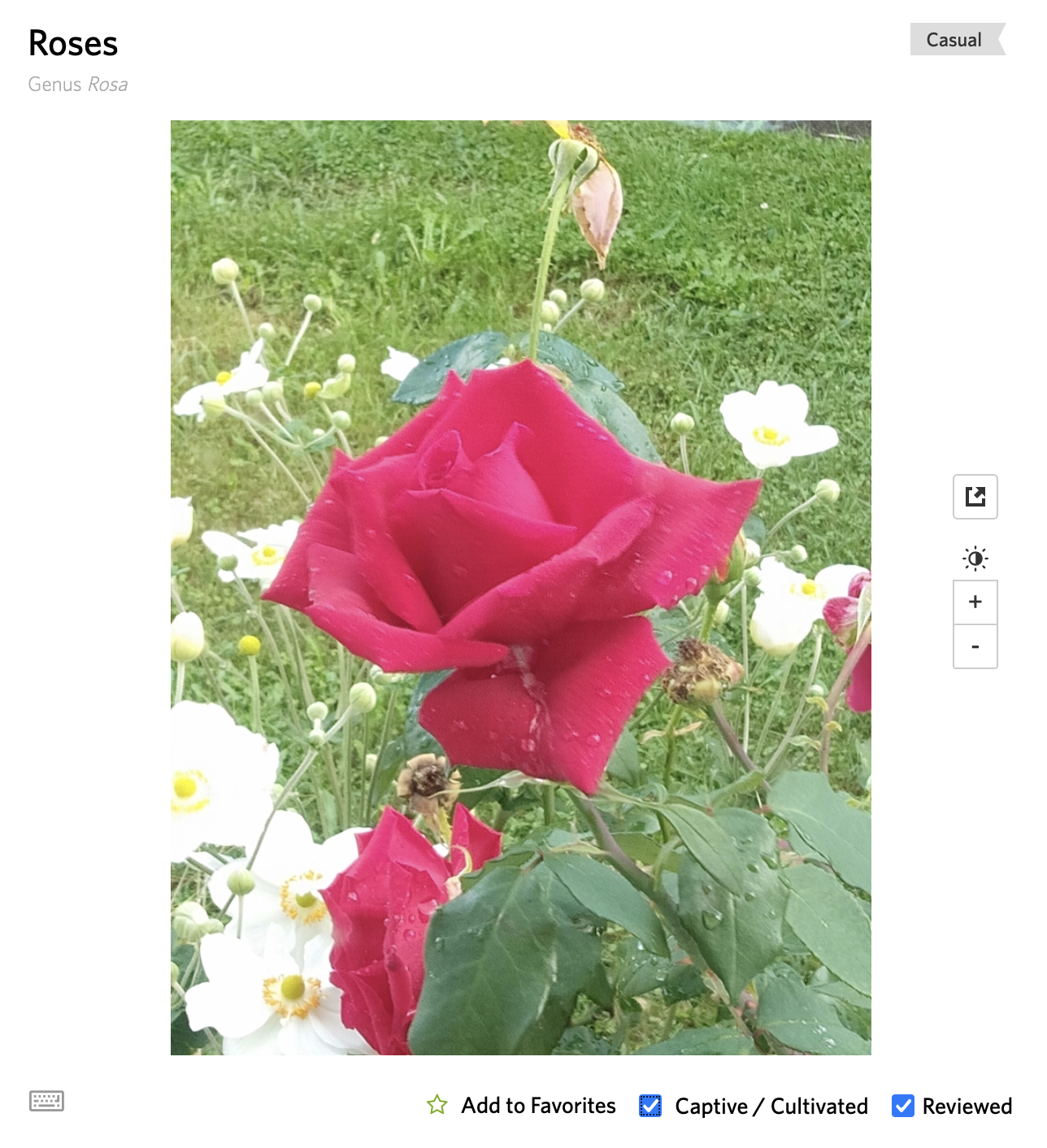RECENT ARTICLES
- CEBRA: An optimised and standardised sampling protocol for BioBlitz
- Stop it people, the plural of anecdote IS data!
- That's no pollinator, that's a flower visitor
- Add a scale to your macro photos
- What to photograph when counting the wild
- Imagine counting the wild on EVERY street in a city!
- My wild counting workflow
- A butterfly flew through
- Why iNaturalist observations without photos can be research grade
- Why you shouldn’t use a spreadsheet for data entry
- All articles ...
Planted native trees are not wild
Planted native trees should all be flagged as “captive/cultivated” on iNaturalist.
written Oct 1, 2018 (last updated Nov 1, 2023) • by Jon Sullivan • Category: Wild Counting

Roses are red, violets are blue; I tag them as “cultivated”, and so should you. Except if they’re wild. Keeping the wild separate from the captive and cultivated is essential when you’re observing nature. Otherwise it’s very difficult to use these observations to make sense of patterns and trends in nature.




That all makes intuitive sense to most people when they’re observing showy exotic plants in gardens. What seems sometimes less intuitive is that it’s exactly the same when observing native trees planted in restoration projects. These are no more wild than the roses in your grandmother’s garden, regardless of whether they were planted this year or a hundred years ago.
Here in New Zealand there have been decades of poorly documented tree planting in reserves around our cities and towns. Public enthusiasm for planting trees in wild places is only increasing. This means that exploring such reserves now is a confusing jumble of trees of unknown origin.
It’s clear that some of those trees must have been planted because they’re not locally native but are NZ natives from elsewhere in NZ. For others, it’s now very difficult to tell. They could be wild plants that tell us about the local environmental conditions when they germinated and established. Or, they could have been planted by someone and say nothing about the local conditions.

It’s like trying to read a story when half the paragraphs are randomly inserted from other books. It makes little sense. That’s frustrating for naturalists and ecologists who are able to read these stories.
Looking at the genetics within species will be even more confusing. Ecosourcing is the golden rule in restoration, but this rule is often (usually?) broken. Some planted natives will have been purchased from nurseries in other cities, or bred from these outsiders, or grown from seed inadvertently collected from historically planted outsiders.
Even proper ecosourcing has the potential to scramble the genetics of tree populations. I expect it to amplify the seed and seedling alleles best suited to nursery environments. Mass planting will also stifle the local tree population’s ability to adapt to the current local environments, since what genetics end up where will be determined by what we plant where, not what is best suited to where.
You’ll have picked up, I’m sure, that I’m uneasy about widespread planting. While that’s true, planting is certainly necessary in some places to kick start the return of native forest to deforested landscapes. It is fantastic that so many people are willing to volunteer their time to make this happen. I want to emphasise, though, that it’s important, now and in the future, to know which plants at a site were planted and which are truely wild.
You can help a lot by sharing observations of plants at restorations sites on the iNaturalist website or app. Be sure to log each planted plant as “captive/cultivated”. The iNaturalist app will automatically grab the location. While you’re at it, have a look to see if you can find any seedlings trying to bring some wild nature into the plantings. Most of these will be offspring of the planted plants, but also look closely for any seedlings of species not planted at the site.
Keeping what’s wild separate from what’s planted will let future generations explore in the habitats we’ve planted, and understand what species are there because of us and which dispersed in by themselves. Just knowing what was planted lifts the fog of confusion around what’s wild and what’s not and lets people read nature’s stories.